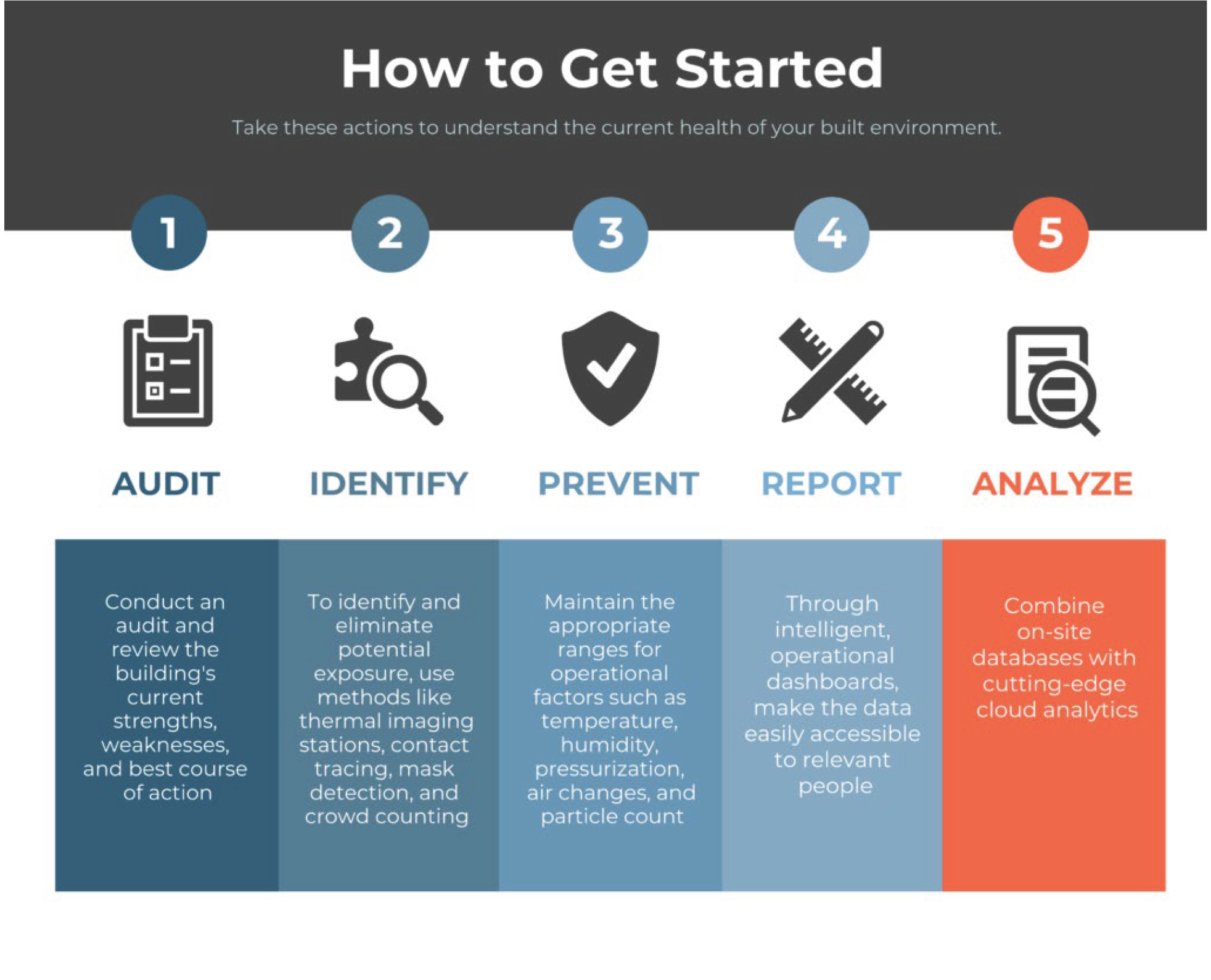What is a healthy building?

This blog defines what a healthy building is, the important components that make up a healthy building and why facility managers are essential in achieving and maintaining a healthy building.
HEALTHY BUILDINGS – A FACILITY TREND THAT’S HERE TO STAY
A healthy building means a commitment to creating and maintaining people-first spaces. It can be defined as a built asset that utilizes uplifting architectural cues and eco-friendly technology to help people live healthier and happier lives. Healthy buildings strategically combine the best practices and processes that focus on the support of psychological, physical, and social health and well-being of users in buildings and the built environment.
What are the benefits of healthy buildings?
Why are healthy buildings important? The goal of a healthy building is to try to eliminate potential risks and provide more benefits for its occupants, such as the following:
Improved Overall Health
Canadians spend
Canadians spend
90% of their time indoors
90% of their time indoors
sick building syndrome
sick building syndrome
Outdoor pollutants can easily penetrate indoors. Given that , most of a person’s exposure to outdoor air pollution actually occurs indoors. The phrase “” (SBS) refers to circumstances where building occupants experience changes in their comfort and health related to their time spent in a building.
Improved Cognitive Function
performed
performed
26.4% better on cognitive function tests
26.4% better on cognitive function tests
A research study showed that workers in green-certified buildings .
Increased Motivation
A healthy building can contribute to office morale
A healthy building can contribute to office morale
by ensuring employees’ peace of mind that their employers care about their comfort, health, and well-being.
Decreased Distraction
A healthy building is a quiet building.
A healthy building is a quiet building.
The health of individuals is impacted by
The health of individuals is impacted by
ambient noise
ambient noise
, which raises stress levels in general and exacerbates stress-related illnesses like high blood pressure, cardiovascular disease, peptic ulcers, and migraines.
Decreased Stress
architects are using a design system
architects are using a design system
Having awareness of SBS, that has been demonstrated to improve physical and mental health, enhance sleep, and lower stress levels for occupants.
Achieving a Healthy Building – Where do you start?
9 foundational elements
9 foundational elements
While there are that are essential to achieving a healthy built environment, you must start with a baseline understanding – primarily a building audit. An experienced facility management partner can conduct your building audit to give you a better understanding of the needs of your building. This will help you understand what the current health of your built environment is and where there are opportunities for improvement.

The Vital Role of Facility Managers
The healthy building trend is bound to accelerate and deepen as people continue to return to buildings that they hope are safe and healthy. Facility managers can play a vital role by updating the way they evaluate their buildings — including enacting additional safety measures and sharing timely information with tenants and employees.
There are also several third-party certification programs that facility managers can participate in to properly evaluate their facilities and ensure they uphold them to a high standard. These include:
Leadership in Energy and Environmental Design (LEED)
Leadership in Energy and Environmental Design (LEED)
: Under the LEED program, points are awarded for projects based on how they address carbon, energy, water, waste, transportation, materials, health, and indoor environmental quality.
WELL Certification:
WELL Certification:
The WELL certification is a plan from the International WELL Building Institute (IWBI) to advance health and well-being.
BOMA Best:
BOMA Best:
Is an environmental assessment and certification program within Canada.
Fitwel:
Fitwel:
Originally created by the CDC and GSA, Fitwel encourages the integration of a health-promoting design and operations strategy.
Integrated Facility Management
Integrated Facility Management
Partnering with an experienced (IFM) partner can also help you start off on the right track in achieving your goal. A focus on building user health and well-being should remain a critical and necessary function of building operations teams. By identifying and reducing occupant health risks and focusing on leading innovation you can take the first few steps towards achieving a healthy building. After all, it’s a facility trend that’s here to stay!


